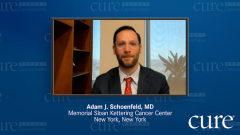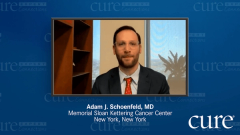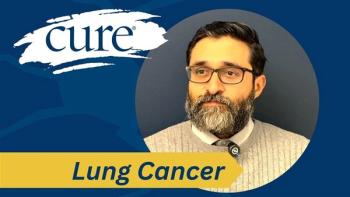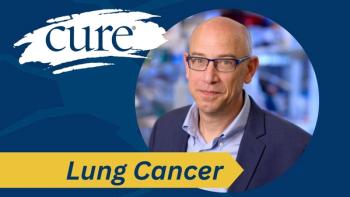
Treatment Considerations for TIL Therapy in NSCLC
An expert thoracic oncologist, Adam J. Schoenfeld, MD, highlights key factors that patients and providers should take into account when considering cell therapy in non–small cell lung cancer.
Adam J. Schoenfeld, MD: My experience with TIL [tumor-infiltrating lymphocyte] therapy has been growing. We have a growing number of TIL protocols that are being activated within my institution, nationally, and globally. I’ve been involved in a number of cellular therapy protocols as well as TIL therapy protocols. It’s a very exciting time for both patients and investigators because we’re having newer technologies that we can offer to patients to help treat their cancer when their options are generally limited. This includes TIL therapy. What we’ve seen in our early experience has been promising. One of the things we have observed is that there can be toxicity initially, but it’s generally short-lived. A benefit is that it’s also a one-time therapy that can have long-term durable disease control for some patients. That’s what we’ve seen in the recently presented data in other TIL trials as well. We are in the early stages, but it’s important to continue to explore this type of therapy based upon the promising early experiences we’ve had.
It’s important for patients to ask questions about any trial they might be involved in, including TIL therapy trials. The more patients know about potential trial options, the better. That includes TIL therapy. I would recommend asking your oncologist about the potential risks and benefits of these trials and reading the materials and asking questions because options are constantly changing. There are new TIL therapy mechanisms and other cell therapy trials that are opening on a regular basis.
Education about TIL therapy, and new therapies in general, involves a discussion with patients about their goals and shared decision-making about how they would like to proceed with treatment options. It’s important for patients and providers to discuss all options, identify the best options for a particular patient, and tailor therapy toward that patient. TIL could be an appealing clinical trial option for some patients, and hopefully a therapeutic breakthrough if these trials are successful.
If patients are considering TIL therapy, the first step is to ask their oncologist if this would be a potential option for them. Asking if they meet eligibility criteria and where they might receive this therapy are other good questions to ask their doctor or physician. TIL therapy is being explored at a number of institutions through clinical trials. That would be the platform to potentially explore this treatment.
Depending upon the results of clinical trials, TIL therapy could change the treatment landscape of non–small cell lung cancer in patients who have progressed on first-line therapy with chemotherapy and immunotherapy or immunotherapy, in particular; or patients in whom we think those therapies might not work; patients who have low PD-L1 expression; and patients who have driver mutations in their cancer, such as EGFR or ALK mutations. Those are all tumor types and settings where TIL therapy is attractive to explore and where it could change the treatment landscape in the future.
When I see patients with lung cancer that has progressed on first-line treatment, I discuss with them a number of different treatment options, including standard therapies, depending on the clinical context, as well as clinical trial options. Depending upon the patient and the setting, that includes TIL therapy as well as other cell therapy options. In the future, we’ll have even more immune cell therapy options to offer patients.
Transcript edited for clarity.







